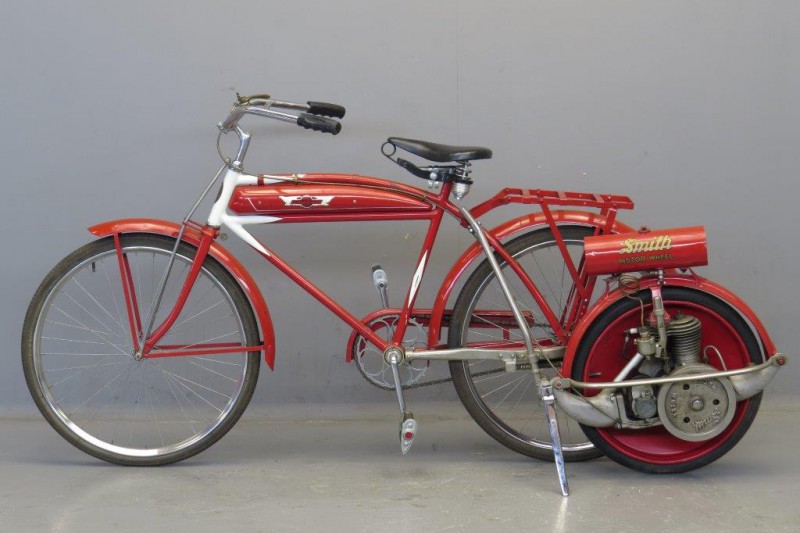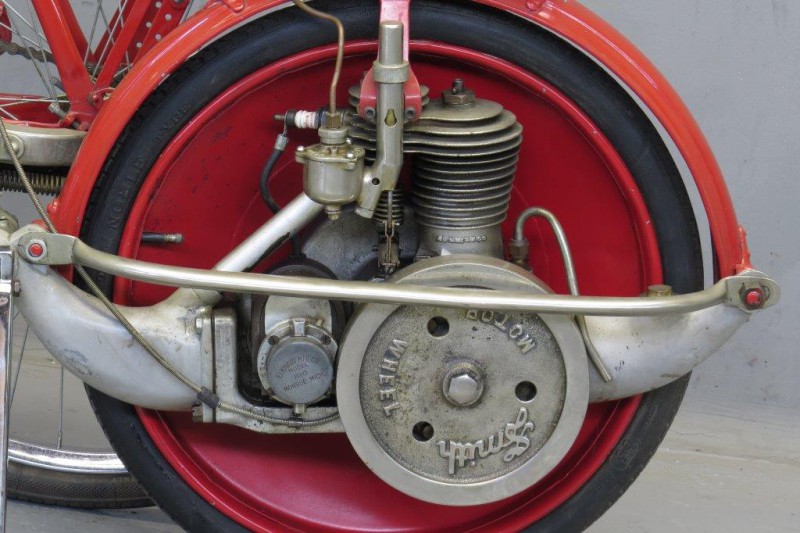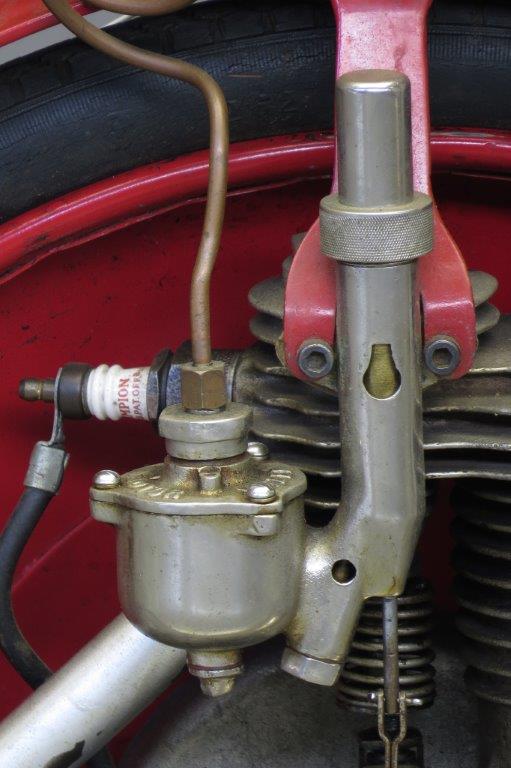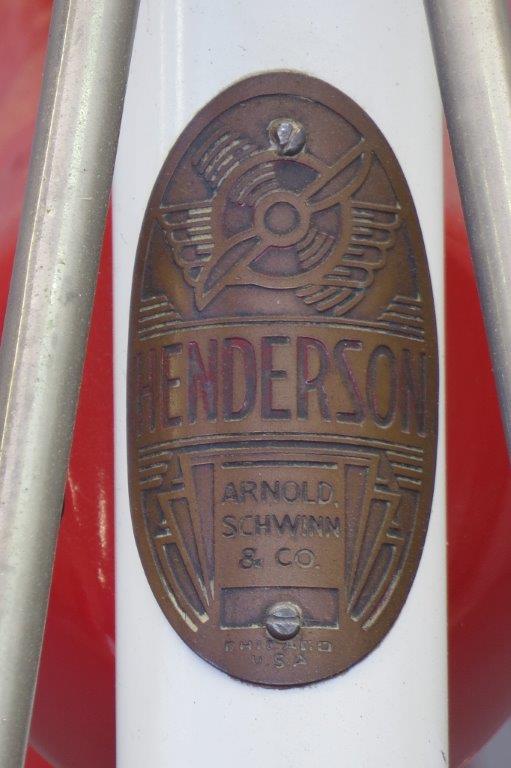Description
Smith Motor Wheel 1917 118 cc single a.i.v. engine # 3941 attached to a Schwinn & Co Henderson bicycle
Mr. A. W. Wall produced various types of motorized vehicles in the ROC Motor Works in Birmingham.
The company was financed by the famous writer Sir Arthur Conan Doyle. Initially Precision-engined motorcycles were built with very long frames that could be equipped with two speed gears of ROC manufacture.
Around 1910 a three wheeled vehicle was marketed, the Wall Tricar.
About that time Wall ventured in the field of auxiliary engines by bringing out the Autowheel, a drive unit that could be coupled to a bicycle.
The Autowheel became popular and thousands were sold in the years before World War 1.
The Autowheel made its appearance on the American scene when the U.S. manufacturing rights were acquired by the A.O. Smith Company of Milwaukee.
Production started in October 1914 on a separate plant in Park Street, Milwaukee.
The Smith wheel was quite advanced in comparison with the Wall machine.
The chain drive and wire spoke wheel were eliminated. By using a four-lobe camshaft to lift the exhaust valve, the gearing was 8 to 1, thereby attaching a 20” disc wheel directly to the camshaft.
The 1914 and 1915 type Motor Wheels were known as “Model A” and were identical with one exception: the flywheel of the 1914 model was plain but the 1915 flywheel was embossed with the name ”Smith Motor Wheel”.
In the years 1914 to 1918 many thousands Motor Wheels were made and sold and although the design remained basically the same there were minor improvements through the years.
The “Model B” was introduced in 1916 and was more dependable because of an improved lubrication system.
Its power was slightly less than that of the Model “A” because of the use of bronze bearings instead of roller bearings.
This was not a technical innovation but a practical measure because of wartime shortage of rollers.
In the “BA” Model of late 1916 and 1917 the roller bearings came back and a drain plug was added under the glass oil sight gauge.
The 1918 “Model C” was destined to be the last model: in May, 1919 the manufacturing rights of the Wheel were purchased by the Briggs & Stratton Corporation of Milwaukee.
They made a number of major design changes and continued the production till 1924.
(Courtesy Colin K on www.oldbike.eu where much useful Motor Wheel information can be found.)
This colourful and technically interesting combination has been restored with care and is a smooth runner.







